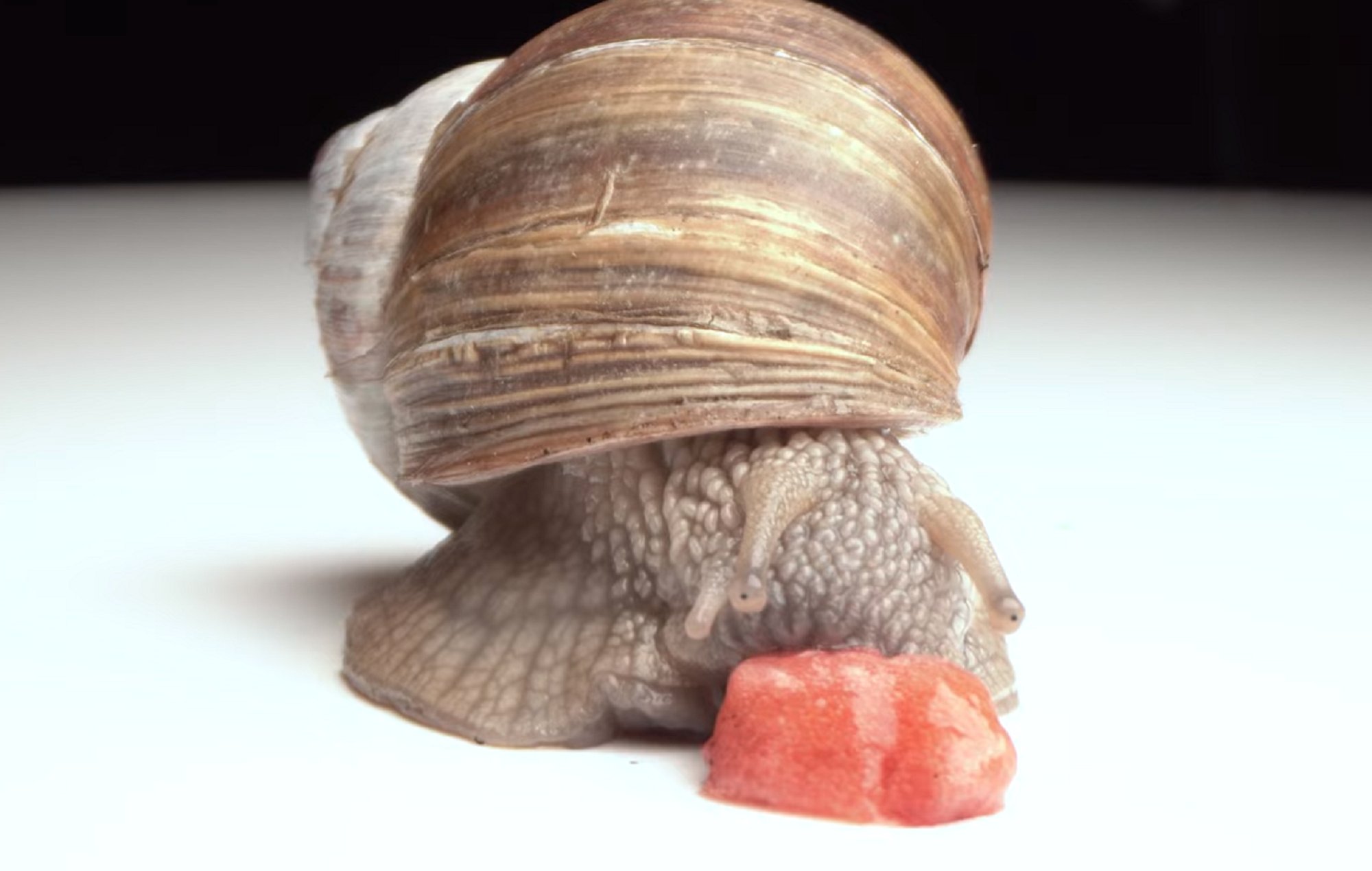

Snails are notoriously slow, excellent ecosystem engineers, and invasive and destructive pests in many gardens and on farms. Their eating methods are also pretty gnarly if you can get up close and personal. A German photographer named Jens Braun from YouTube channel Another Perspective released a video of a snail munching on a strawberry, with close-up details offering a fresh perspective on an unusual mollusk.

Brown garden snails are about one inch in diameter at maturity and have a brown and gray color pattern. They are most active when the air and ground are damp, mostly sliding around during the nighttime and early morning hours. They are native to Great Britain, Western Europe, and along the borders of the Black and Mediterranean seas, but can now be found across most of the southeastern US and both coasts.
[Related from PopSci: Sea snail venom could lead to better insulin for diabetics]
Snails typically are omnivores, but the main staples of their diet are ornamental plants, flowers, weeds, veggies, and of course fruits. Snails and their close relatives, the slugs, eat with their jaw and a flexible band of microscopic teeth called a radula. During a process called rasping, thousands of radula scrape up food particles, then they use their jaw to cut off larger pieces of food like leaves to be rasped.
Part of why snails are considered such a pest is that they can severely damage orchards by feeding on ripening and ripe fruit, as well as the leaves and bark growing on young trees. The telltale signs of fruit damage are circular chewed areas of the fruit’s rind, and leaves typically appear chewed along their margins.
Citrus orchards are particularly vulnerable to becoming snail buffets since their watering methods and weed control creates a moist environment where snails can thrive. Last summer was a particularly rough snail year in South Florida, after snails that can be the size of a fist bounced back after a decade-long battle to eradicate them.
[Related: It’s still a mystery how snails ended up scattered around the globe.]
Snails are also hermaphroditic—meaning all snails that reach reproductive age can lay eggs. This happens up to six times during a mating season, typically in the late spring and early summer. They lay up to 80 eggs per month in shallow depressions in the topsoil after mating. The eggs hatch after being in the soil for 14 to 40 days, and they will eat their eggs and even the eggs of their siblings to get enough calcium to harden their shells.
While many snails are harmless to humans aside from being a garden pest, cone snails contain a paralyzing venom that can even be fatal in humans. When injected, the venom puts the victim into excitotoxic shock, which makes them unable to move within only a few seconds. Then, the snail opens its mouth wide to engulf all of the prey in a slow and painful death. Understanding how this venom works could help scientists produce better pain medication.
If you are keen to keep snails from eating your produce, raking over soil, using study plants in pots instead of seedlings, and searching for the pests during damp and mild evenings and transporting them to a compost heap can help.
